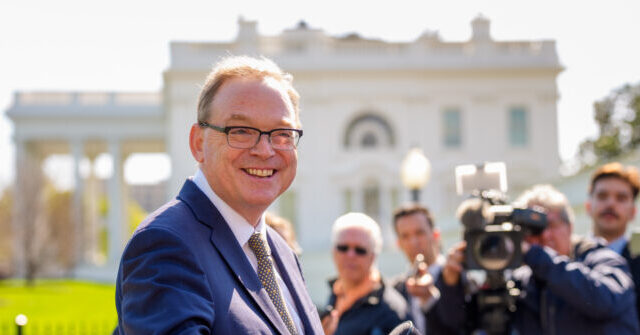Donald Trump’s advisers are divided over how to fill an upcoming vacancy on the Federal Reserve Board, with some pushing for a short‑term appointee and others urging the president to seat a credible successor to Fed Chair Jerome Powell, according to people familiar with internal discussions.
Federal Reserve Governor Adriana Kugler is stepping down on August 8, opening a board seat with a term that expires in January 2026. Some administration officials are advocating for a placeholder—ideally someone already confirmed by the Senate—to expedite the nomination process. Others want the president to use the opening to install someone who could be elevated to Fed chair next year, when Powell’s term as chair expires in May.
Kevin Hassett, director of the National Economic Council and former chair of the Council of Economic Advisers, is seen by many in the administration as the leading candidate under that strategy. Advisers say naming Hassett now would offer continuity, ease any leadership transition, and help preempt potential complications if Powell declines to step down as a governor. While Powell’s chairmanship ends next spring, his term as a board member runs through January 2028. Although it would break precedent, administration officials believe it’s possible he may choose to stay on.
Trump said this week that Hassett is one of the finalists for the chairmanship. The others reportedly include current Fed Governors Christopher Waller and Michelle Bowman, both of whom dissented in favor of rate cuts at the July policy meeting, and former Fed Governor Kevin Warsh.
Trump also mentioned Treasury Secretary Scott Bessent, saying Bessent has indicated he does not wish to be considered for the chair at this time. However, administration officials believe that position does not rule him out for the job should Powell step down next year. Bessent remains widely viewed inside the White House as Trump’s preferred pick for the role, and some advisers say he could be tapped later if the path opens.
Names floated for a temporary appointment include Stephen Miran, the chair of the Council of Economic Advisers with private sector experience trading rates and currencies. Advisers say his markets background and familiarity with trade policy would add a perspective currently lacking on the Board, particularly as the Fed factors tariffs into its inflation outlook. Also under consideration is Michael Faulkender, the current Deputy Secretary of the Treasury, who previously served as assistant secretary for economic policy and played a key role in the implementation of the Paycheck Protection Program. Casey Mulligan, now serving as Chief Counsel for Advocacy at the Small Business Administration, is another contender. A University of Chicago economist, Mulligan previously served as chief economist at the Council of Economic Advisers.
One additional name mentioned as a potential placeholder is James Fishback, a former hedge fund analyst and public advocate for a more populist, rules-based approach to monetary policy.
Even if the White House settles on a nominee quickly, confirmation before the Fed’s next policy meeting in September is unlikely, limiting participation to the final two meetings of the year, in November and December.
Trump said he expects to announce a decision this week. Kugler’s early departure presents the administration with an opportunity to begin reshaping the central bank’s leadership ahead of the 2026 chair transition. While one additional vote won’t immediately alter policy, it could bolster the influence of more dovish voices on the Federal Open Market Committee. At the July meeting, Waller and Bowman dissented—the first time since 1993 that two governors voted against the majority—favoring a cut in interest rates.
Powell and the rest of the committee held rates steady at their July meeting and have done so throughout 2025. A majority of Fed officials signaled in June that they expect to lower rates twice before year-end. Trump has sharply criticized the Fed’s stance, blaming high interest rates for restraining economic growth and inflating government borrowing costs.
The president’s choice for the Kugler seat—whether a short-term placeholder or a presumptive chair—will offer a first glimpse into how aggressively he intends to reshape Fed policy in a second term.
Read the full article here


